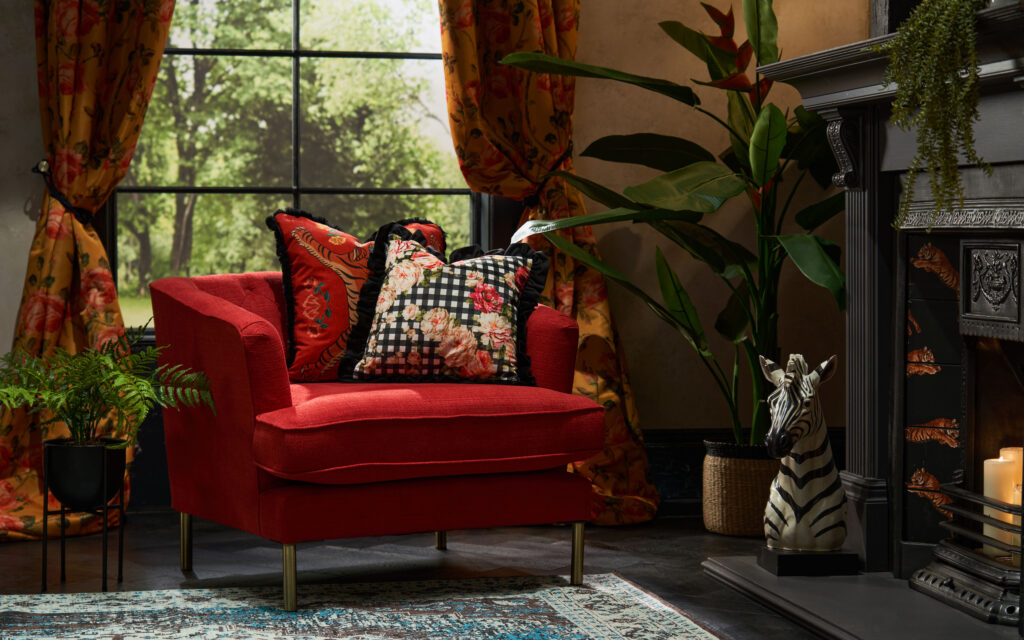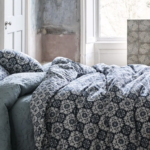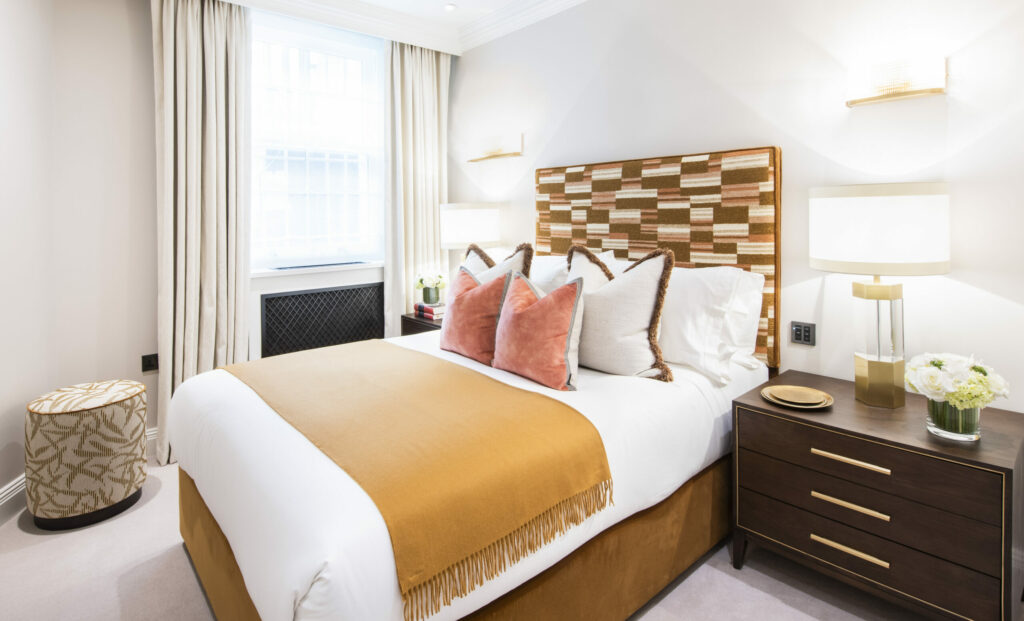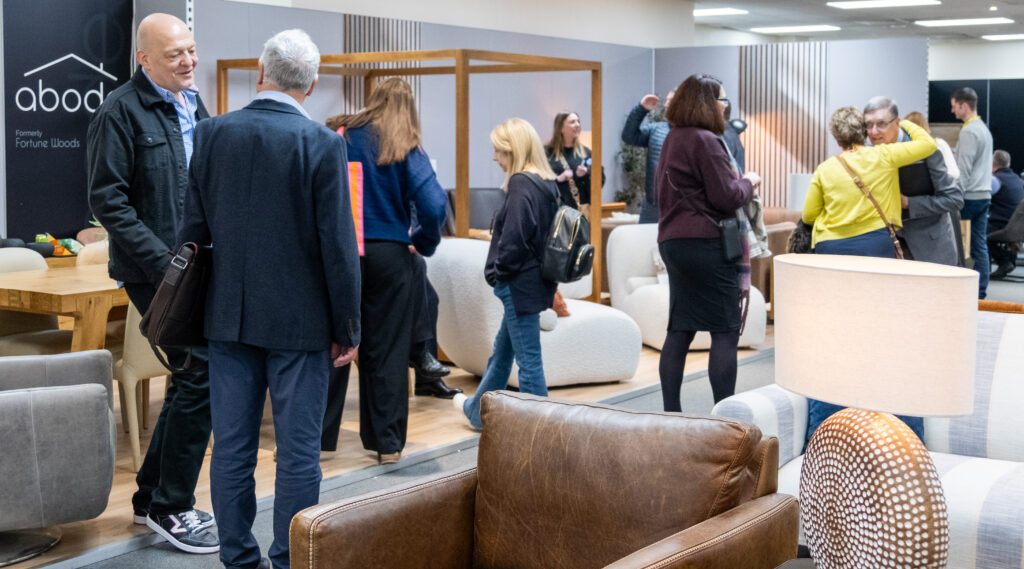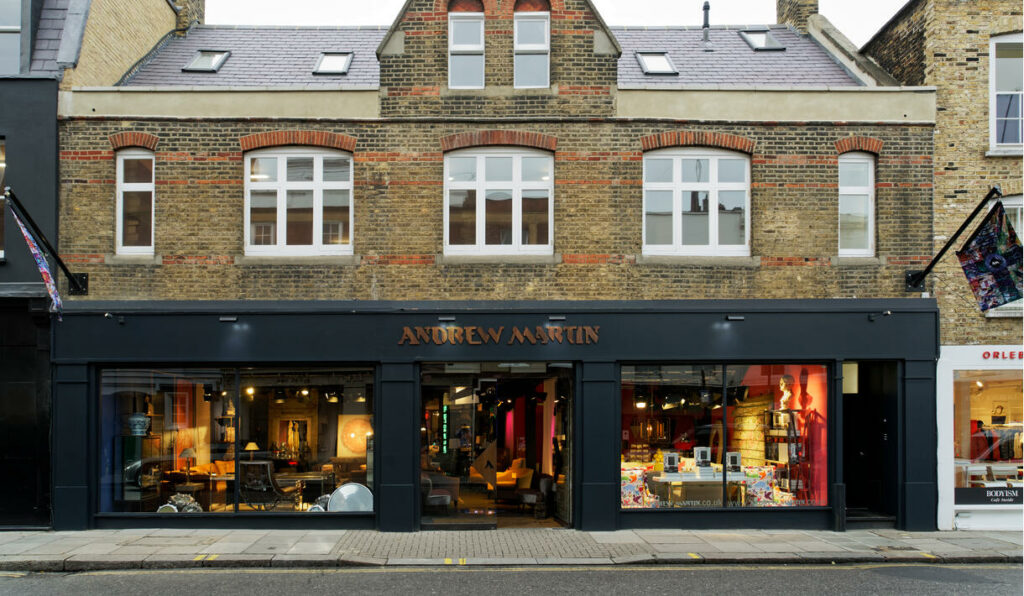For the majority of people, a sofa is an investment piece designed to be kept for years, however choosing one you ‘lust after’ rather than love can be a unwise decision in the long run. In fact, seven out of ten (70%) Brits admit they’ve fallen out of love with one they’ve owned, with two-fifths (41%) admitting this happened within the first two years.
With apps like Instagram and Pinterest providing an abundance of inspiration at our fingertips, the consequences of having too many options can be similar to when dating, giving us an inability to commit as the ‘grass is always greener’. Of those surveyed who admit they have fallen out of love with a sofa, 36% blamed it on ‘interior trends changing’ and ‘social media influence’, whilst three out ten (29%) claim it was down to it no longer suiting their home.
The study conducted by ScS also revealed that six out of ten (60%) Brits would like to get better at making purchases based on love rather than lust. So, to shed light on the impact of choosing lust over love in a relationship, ScS have teamed up with Jessica Alderson, relationship expert and co-founder of dating app So Syncd, to share her thoughts. Whilst Victoria Foster, interior stylist at ScS translated what this means when it comes to committing to interior design choices.
Jessica shares: “Distinguishing between love and lust can be complex, as they can feel similar in the moment, and they can overlap. Love and lust aren’t mutually exclusive, and a healthy relationship can include elements of both.”
Dating apps can create an incorrect ‘grass is always greener’ attitude
“With so many options quite literally at their fingertips, some people feel less of a need to invest time and effort into one person. The mindset of always thinking there could be someone better out there can lead to a lack of commitment and a constant search for the “next best thing,” which can be detrimental in the long run. When they aren’t used mindfully, dating apps can contribute to a “grass is always greener” mentality.
“The paradox of choice” is a term coined by Barry Schwartz to describe the effect of having too many options. In dating, this abundance of choice can lead to indecisiveness and commitment issues. In some ways, it’s a real tragedy that people are missing out on potentially life-changing connections because they are constantly chasing a perceived “upgrade.”
As consumers we can often find ourselves spoilt for choice, too. That’s why interior stylist Victoria Foster at ScS has offered her take on finding furniture that you’ll love forever, rather than lust after now.
Jessica shares: “While there isn’t a definitive checklist, there are considerations that can help you distinguish between love and lust. It’s worth noting that these are general guidelines and individual experiences may vary.”
Jessica has shared her top 5 things to think about when deciding if your feelings are based on love or lust.
- Achieving depth of connection:
Jessica shares: “A great tip is to set boundaries for yourself and stick to them. This can include limiting the amount of time you spend on dating apps or taking a break from them completely. Having personal boundaries can provide external structure to help you adjust your mindset and encourage you to focus on quality interactions rather than quantity. Limiting your options and being selective can give you time and headspace to reflect on your experiences, reassess your priorities, and approach the process with a clearer mindset.”
Love: tends to involve a deep emotional connection, where you care about the well-being and happiness of the other person.
Lust: is more focused on superficial factors.
Victoria’s interiors translation: “You know your sofa is a match when you can safely say it will meet the needs of the entire family and meet all of your practical requirements, not just your aesthetic ones. For example, if a sofa is too low to the ground for you to comfortably get in and out of, or if the back isn’t high enough to support you in the way you need, you’re swiftly going to regret your choice and fall out of lust.”
- Evaluate the long-term perspective:
Jessica says: “The quality of our relationships is the best predictor of happiness and well-being, not the quantity. Building a strong and committed relationship over time often leads to more fulfilling and lasting happiness.”
Love: often involves a long-term perspective, including commitment, support, and a desire to build a future with the said person.
Lust: tends to be more short-term, focused on immediate gratification.
Victoria’s interiors translation: “A sofa is an investment piece and unless you have the luxury of purchasing a new one every time you grow tired of it, you should adapt and grow with it. When choosing a sofa, ensure the decision isn’t trend-led, as you will likely fall out of love with it as quickly as you fell in love. Buying a sofa you’ve loved for a long time is a great indicator that you will continue to appreciate it for years to come. Rather than choosing a style you’ve experienced instant infatuation for.”
- Have acceptance of any imperfections:
Jessica explains: “It’s important to recognise and accept that no one is perfect. Constantly searching for a “better” option can lead to missing out on an incredible connection that could develop with the person right in front of you. This isn’t about settling; it’s about appreciating what is in the present moment and giving a relationship a chance to grow.”
Love: involves accepting someone’s flaws and still caring deeply for them.
Lust: tends to be about idealised images and is less accepting of imperfections.
Victoria’s interiors translation: “Our relationship with our sofa is no different. You’ll likely keep the same sofa for years, so over time you might start to dislike elements of the design or wish a certain aspect was more like a current trend, but buying a new one might not be an option.
“It’s easy to compare your interiors to others on social media and be critical of your own choices or express regret, but instead you should try to appreciate the benefits of your choice; such as how well it seats the whole family, if the material is hard-wearing, and it’s comfortable. Then work on ways to improve the elements you don’t love as much anymore.”
- Prioritise your happiness and values:
Jessica explains: “In order to make effective decisions in dating and other areas of life, it’s important to have a clear understanding of your values and priorities. This can help narrow down the options and make it easier to choose what aligns best with your desires.”
Love: involves a genuine concern for the well-being and happiness of the other person, even if it requires sacrifices.
Lust: tends to prioritise personal desires over the well-being of the other person.
Victoria’s interiors translation: “The most important offering a sofa has is to provide comfort and a relaxing place for your family and friends to gather and catch up. When choosing a sofa remember to prioritise your own and your families needs, such as choosing a pet-friendly material or one that reclines. Don’t be afraid to turn down a perfectly good deal or even the most visually appealing design if it doesn’t match your needs.”
- Practise emotional resilience:
“Commitment and being willing to put in the work are core components of any successful relationship, so if you are unwilling to invest in someone without a valid reason, it may be time to reassess your approach to dating.”
Love: often involves emotional resilience, where the relationship withstands challenges and difficulties.
Lust: may falter when faced with obstacles or challenges, as the connection tends to be based on physical attraction primarily.
Victoria’s interiors translation: “Beginning to tire of your current sofa doesn’t mean it’s the end of the road for you both, it’s important to not view this as a dealbreaker and instead understand it’s natural. Instead, give it a new lease of life by adding accessories, change the lighting or tie the sofa colour into the rest of the room better.”
To practise emotional resilience and work through any challenges you may face with your sofa, Victoria suggests the following ways to mix up your style aesthetic:
Change up the cushions, throws and blankets you have on your sofa
“No sofa is complete with scatter cushions and a throw, therefore the easiest way to make your sofa feel brand new again is by investing in new soft furnishings. If you already have cushions why not look to purchase new covers for them which will ensure costs are kept down, just make sure to find out the exact sizing of your cushions.
“Similarly if you have throws elsewhere in your home such as on your bed, why not try swapping them, to give both rooms a new lease of life.”
Place shelves behind/ above your sofa
“If the reason you have fallen out of love with your sofa is down to the colour or how it works with your room, why not move a bookcase behind the sofa, or if you’re able to, hang floating shelves above the sofa. Adding in extra places to add decorations and accent colours allows you to blend the sofa into the room better, as you can place decorative items in the same or complimenting colours to the sofa and give the room a more harmonious feel.”
Switch up the positioning of your sofa in the room
“Sometimes it isn’t the actual sofa we’ve lost love for, sometimes it’s the positioning in the room or what other items of furniture are nearby. There’s a reason so many children constantly move around the furniture in their bedroom, it’s because it breathes new life into a space. Changing the location of your sofa can change which colour wall is behind it, how lighting interacts with it, and what your view is whilst you’re seated. These can all make it feel like a fresh space and satisfy the craving for a new sofa.”
Changing the lighting setup can change the appearance of your sofa
“In the same way that changing the position or orientation of your sofa can make it feel new, so can changing the lighting setup around your sofa. Switching from brighter white bulbs to soft yellow-toned ones can drastically change the tone of the sofa and allow it to blend better into the rest of the room.
“Equally if you’re happy with the colour of your bulbs, changing where your lamps are in relation to the sofa can give the room a completely different feel. Placing light sources either side of the sofa, on side tables, or on the wall help to frame the sofa and give it a greater sense of belonging in the room.”
Victoria shares her thoughts on what to look for when choosing a sofa you want to have style longevity
Multiple complementary colour schemes
“Sofas tend to be an investment piece that we keep for years, however trends and personal preferences change and the last thing you want is to be thinking of repurchasing a brand new sofa when yours is in perfectly good condition.
“It is therefore important that when you decide on a sofa, you choose one that can adapt with you as your style changes. Opt for a colour that complements a variety of colour palettes. Therefore if you begin to crave a change, you only have to paint the wall a different colour or choose different cushions for it to take on a whole new aesthetic. “
Avoid trend-led decisions
“To avoid feeling a sense of regret a couple of years after purchasing your sofa, try to think about whether you’ve made your choice because you truly love everything about it or whether it just represents what’s trending at the moment. If it’s the latter, it’s likely that when what’s trending changes to something new you will instead wish you had the new style.”
Try before you buy
“Where possible, trying before you buy a sofa is the best thing you can do to make sure it’s the right sofa for you. The best way to determine this is to sit, slouch and lounge on a sofa before you commit to making a purchase.”


